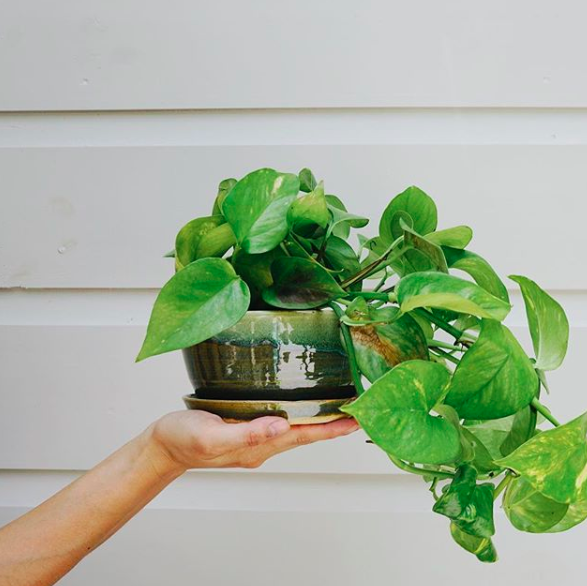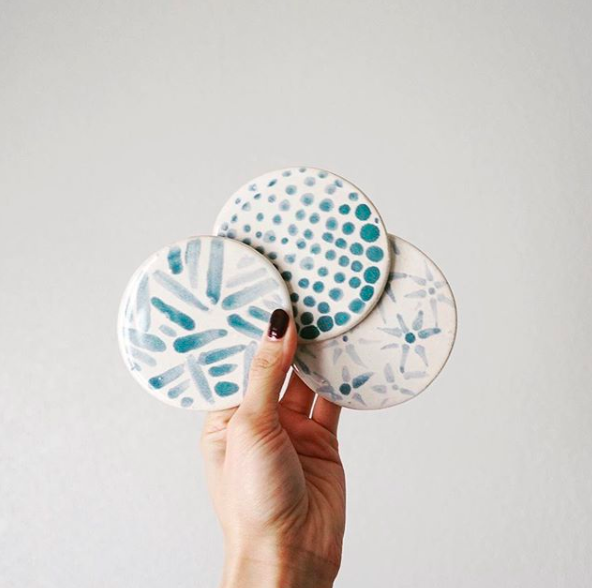Kimly Phamvan
Kimly Phamvan is a Product Owner of Analytics at SupplyPike, an analytics software for small to medium sized businesses. Outside her busy schedule of meeting with clients, driving her team of engineers and designers, and deciding the directions of Analytics' future, Kimly creates ceramic goods for her business Willow and Stone.
Kimly moved from LA to Fayetteville just a couple of years ago. Before this, she worked with Payoff as a Product Owner working on Lift, a software to educate young-adults and financially un-savvy individuals on how to better manage their money.
She became a Product Owner due to “a weird series of very fortunate events.” After graduating school with a degree in economics, Kimly began working as a Marketing Associate for Payoff. Kimly described how while she was in school she was always fascinated on how consumer behavior and economics intertwined, and she was able to take the lessons she learned in school and apply them to her career. Armed with this knowledge, Kimly had the opportunity to move up and become a Product Owner after only a year.
“It was really great whenever I got to see who the product (Lift) would ultimately be servicing,” Kimly shared with me, as we began to settle at the Sushi restaurant we met at. “As someone who had a student loan and needed to pay it off quickly without the help of my parents, spreading the education of how to be smart financially was important to me.”
Now Kimly is the product owner for Analytics for SupplyPike. “I love being able to think about what could best service the users, but also consider how to be both beautiful and efficient.”
“Being a small business owner myself, I get to be a voice for other small businesses as we develop this product. I like to think that I’m stopping big box names taking over the household, and helping a smaller product gain ground.” She paused as our food was delivered to the table. “Helping these businesses succeed is always something I keep in mind.”
Kimly began her small ceramic business in California. “I’m a jack of all trades and master of none.” She said smiling, “I was working on watercolors and other mediums, but I just needed another creatives outlet. In college I took art classes. It’s fun being able to create things and then see the look in peoples eyes when you give it to them.”
As we continued eating our meal, I prompted her to tell her story of how she began selling her work. “When I moved to a new city a few years ago I just got back into making pottery. I didn’t have very many friends and I just wanted to have something to do.”
“I started to throw in a studio that had a lot of foot traffic. One day I decided to put out some of work on one of the shelves and it actually sold. That was the first time someone had paid me for my work.”
“Then about a year ago, I saw an application for a craft show and thought ‘why not.’” Kimly paused for a quick bite. “It helps that I have such a supportive husband. When I first started this he told me that I could do this and then helped me out in every way that he could.” The last craft show that Kimly participated in, her husband helped build the shelves for her to hang her ceramics.
“I have a great support system and it’s a really exciting experience getting to see and talk to people about your work. Ever since I had that first sale and I realized that people were willing to pay for what I had made, I have thought that maybe this could be a thing.”
She put down her food, looking serious. “But there are a lot of ways that I put myself out there and it makes me uncomfortable. I don’t like selling myself. I’m a huge introvert and there are definitely times when I say to myself, ‘I don’t want to be around people anymore.’”
This fear doesn’t stop Kimly from pursuing her hobby. When she arrives at the studio she plays music and begins to craft. “There is something about putting my hands down to make something that I really like, and hopefully, something that someone else likes. That’s why I keep doing it.”
With the lull in the conversation I asked her about her move from California to Arkansas and how she has been adjusting. “I’ve been pleasantly surprised,” she grinned. “At first, I was hesitant to move to some place where I was going to be one of the few minorities. It can be a challenge to help mitigate that a bit because it does get lonely. But I think it’s worth it.”
Kimly revealed to me that her family fled to the U.S. from Vietnam seeking asylum. Their courage is what fueled her decision to move to Arkansas. “They would just go for things. I was always taught that America is a melting pot and that’s what makes it so great. So with my move, I just told myself to not let fear prevent me from being able to do this.”
She hopes that by just embracing the community she can help spread awareness of other cultures, and hopefully encourage more diversity and acceptance. “It’s very natural to be anxious. I do think it is important to surround yourself in a community and help other people understand the truths about you and your background.”
The decision and prep talk that Kimly gave herself as she moved a couple of thousand miles away was very similar to the conversation she had with herself as she changed jobs. Working in the Software industry, Kimly had been very used to working in a male dominated field. Women working in Software Development and Technology related fields total at a sobering 16%. So when there was a new opportunity, Kimly had to make another brave decision to represent an underrepresented group.
“I remember my brother telling me that I have to fight for things because I am a girl.”
At Payoff, Kimly was the first girl to join the team. “When I walked in on my first day I heard, ‘Is that a girl’s voice?’” She described how she was fortunate enough to work for a company that worked hard to recruit women. “Eventually there were engineer women on the team, and that’s rare because you don’t usually see multiple female engineers.”
“On my product team it was all men except me. I grew up with brothers and was used to working in male dominated fields. But I would sit in conference rooms, and one, be the youngest and two, be the only female. I would have to fight to get myself heard. ”
Upon moving and taking the job at SupplyPike, Kimly realized that she would have to go through the process of being one of the few females at the company again. “I don’t remember at what point exactly I realized I was the only girl, but I can assure you that I was a little apprehensive.”
Kimly was invited to a happy hour by the CTO. “I was looking around and talking to everyone. I started to realize that all of the women I was talking to were partners of the people who worked with the team (SupplyPike). I pulled one of the developers aside and asked if I was going to be the first female on the team.”
Kimly began to smile, “He looked so earnest and worried. ‘Yes,’ he said, ‘but we WANT more women on the team.’” Recalling the story she started to laugh. “I had been asking myself if I was ready to do this all over again. But after talking to that developer, I remember thinking ‘what if other women said no to working here because there wasn’t another woman on the team?’ So I took the first step.”
“I remember my brother telling me that I have to fight for things because I am a girl. It made a difference for me to be the first girl on the team and to add to that environment. While equality is not at the forefront in the workforce. It is something you have to be constantly be pushing for and bringing awareness to.”
SupplyPike now has over 20 female employees. “There are times when I look back and think ‘how did I ever get here?’” Kimly shared as we pushed away our plates. “Because I don’t know what I am doing. I just figure it out as I go. Even now, I am learning to have no regrets because at least I know that I tried. By putting myself out there and taking leaps of faith I hope that there is an impact that lasts.”











